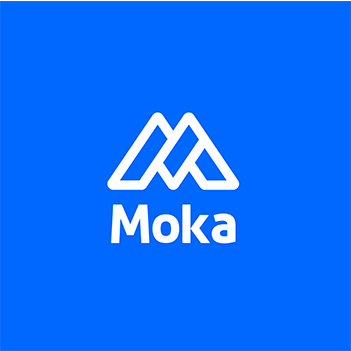How to Measure Quality of Hire Effectively in 2025

Quality of hire: how to measure and improve it serves as a vital metric for evaluating hiring success. It combines performance scores, retention rates, and cultural fit to measure how well new hires contribute to your organization. In 2025, focusing on this metric becomes even more critical. With unemployment rates at just 3.4%, the job market is tighter than ever. Companies must prioritize hiring quality candidates to stay competitive. Modern, data-driven approaches help you track metrics like productivity and engagement, ensuring your hiring decisions align with long-term goals. Organizations that adopt these practices often see improved performance and reduced turnover.
Key Takeaways
Quality of hire checks performance, staying power, and team fit to see how new workers help.
Using data-based hiring can make hiring 74% faster and boost staying rates by 37%.
Make sure hiring teams agree on job needs to avoid confusion and hire better.
Get feedback often from new workers and bosses to improve hiring plans and make starting easier.
Use tools to watch important numbers like staying rates and work output for smarter hiring choices.
Quality of Hire: How to Measure and Improve It
What is quality of hire?
Quality of hire measures how effectively new employees contribute to your organization’s success. It combines metrics like performance, retention, and engagement to evaluate the value a hire brings. For example, new hire performance can be assessed through sales quotas or customer satisfaction ratings. Retention rates and employee engagement surveys also provide insights into how well new hires fit within the company. By using these measurable indicators, you can create a clear framework to define and track hiring success.
Why is quality of hire important for businesses?
Hiring the right talent directly impacts your organization’s performance. Quality hires reduce costs associated with turnover and mis-hires. They also improve productivity and drive better business outcomes. Studies show that top performers can outperform average hires by up to 400%. Additionally, focusing on quality of hire ensures that your recruitment efforts align with long-term goals, helping you build a motivated and engaged workforce. This approach not only enhances operational efficiency but also strengthens your company’s competitive edge.
Key factors influencing quality of hire
Several factors influence the quality of hire. Metrics like time-to-hire, cost-per-hire, and offer acceptance rates reflect the efficiency of your recruitment process. Candidate experience and hiring manager satisfaction assess the qualitative aspects of hiring. Additionally, pre-hire assessment scores and source quality help identify the best candidates. Post-hire metrics, such as retention rates and time-to-productivity, reveal how well new hires adapt and perform. By integrating these quantitative and qualitative methods, you can make informed decisions to improve hiring outcomes.
Challenges in Measuring Quality of Hire
Subjectivity in performance and cultural fit evaluations
Evaluating performance and cultural fit often involves subjective judgments, which can lead to inconsistent results. For example, cultural fit assessments have a validity coefficient of just 0.13, making them one of the least reliable predictors of job success. In contrast, structured interviews and cognitive ability assessments score much higher, with coefficients of 0.58 and 0.65, respectively.
From a scientific standpoint, culture fit assessments are among the worst possible predictors of job success.
To reduce subjectivity, you can rely on structured methods like work sample assessments or integrity tests. These tools provide measurable insights, helping you make more objective hiring decisions.
Misalignment among hiring stakeholders
When hiring managers and recruiters lack alignment, it creates inefficiencies in the hiring process. Misalignment can lead to hiring individuals who disrupt team dynamics or fail to meet role expectations. For example, Greenhouse successfully addressed this issue by defining role requirements and candidate skills before posting jobs. They also used interview intelligence tools to create a more structured process.
You can follow similar steps to improve alignment:
Define clear role requirements and expectations.
Build diverse talent pipelines to ensure inclusivity.
Use tools that promote objective evaluations.
By aligning stakeholders, you can improve hiring outcomes and reduce friction post-hire.
Tracking long-term metrics effectively
Measuring quality of hire over time requires consistent tracking of key metrics. Retention rates, performance reviews, and cultural contributions provide valuable insights. For instance, tracking retention beyond 12 months indicates successful recruitment. Performance ratings tied to KPIs and time-to-productivity metrics reveal how quickly new hires adapt.
To ensure effective tracking, combine quantitative data with qualitative feedback. Peer reviews and exit interviews can uncover hidden trends, helping you refine your hiring and onboarding strategies.
How to Measure Quality of Hire Effectively

Pre-hire metrics: Assessment scores and job fit
Pre-hire metrics provide valuable insights into a candidate's potential before they join your organization. Assessment scores, for instance, allow you to evaluate skills, cognitive abilities, and personality traits objectively. These scores help prioritize candidates based on their suitability for the role, reducing biases and improving hiring efficiency. In fact, using assessment data can speed up the hiring process by up to 74%, cutting the average time from 24-30 days to just 5-10 days.
Job fit is another critical pre-hire metric. It measures how well a candidate aligns with the role's requirements and the company's culture. Candidates who score high on job fit assessments are 37% less likely to leave the organization, ensuring better retention. By combining assessment scores and job fit evaluations, you can increase hiring success rates by up to 90%.
Evidence Type | Statistic/Result |
|---|---|
Hiring Efficiency | 74% faster hiring process (from 24-30 days to 5-10 days) |
Employee Retention | 37% decrease in turnover compared to ordinary practices |
Hiring Success | Increase in hiring success by up to 90% with fact-driven processes |
Post-hire metrics: Productivity and retention rates
Post-hire metrics help you evaluate the effectiveness of your hiring decisions over time. Productivity, for example, measures how quickly new hires reach full proficiency in their roles. A shorter time to ramp-up indicates a successful hire and an effective onboarding process. Retention rates, on the other hand, reveal how well new employees adapt to the company. High retention rates often reflect a good cultural fit and strong engagement.
Metric | Description | Implication for Quality of Hire |
|---|---|---|
Percentage of new hires who stay with the company over time. | High retention indicates a good fit and effective onboarding. | |
Time to ramp-up | Duration for new hires to reach full productivity in their roles. | Longer ramp-up times may indicate issues with onboarding processes. |
By tracking these metrics, you can identify trends and refine your hiring strategies to improve the quality of hire.
Using surveys and engagement data
Surveys and engagement data provide qualitative insights into the quality of hire. New hire surveys, for instance, can measure satisfaction levels and identify areas for improvement in the onboarding process. Questions like "How satisfied are you in your role?" or "Do you feel supported in your new position?" can uncover valuable feedback.
Engagement metrics, such as the Employee Net Promoter Score (eNPS), assess how likely employees are to recommend your company. Participation in company initiatives and culture-building activities also indicates how well new hires integrate into the organization. By combining these insights with quantitative data, you can create a comprehensive picture of hiring success.
Tip: Regularly collecting and analyzing survey data helps you identify patterns and make data-driven improvements to your hiring and onboarding processes.
Leveraging analytics tools for accurate measurement
Analytics tools play a crucial role in accurately measuring the quality of hire. These tools help you track key metrics and gain actionable insights into your hiring process. By leveraging data, you can make informed decisions and improve hiring outcomes.
One way to use analytics tools is by monitoring specific metrics. These include retention rates, cultural fit, employee performance, time to productivity, and hiring manager satisfaction. The table below highlights how each metric contributes to measuring the quality of hire:
Metric/Tool | Description |
|---|---|
Retention rates | Measures the proportion of employees who remain employed over a period of time. |
Cultural fit | Assesses how well the new hire aligns with the company’s values and culture. |
Employee performance | Feedback from the manager or team on the new hire’s overall contribution and goal achievement. |
Time to productivity | The time it takes a new hire to become fully productive in their role. |
Hiring manager satisfaction | Measures how pleased hiring managers are with the recruitment process and the new hires' contribution. |
To maximize the effectiveness of analytics tools, you should focus on the following practices:
Set clear performance metrics to evaluate new hires.
Gather feedback from managers and peers to assess contributions.
Track employee retention to identify long-term success.
Measure time-to-productivity to evaluate onboarding effectiveness.
Analyze engagement levels to ensure cultural alignment.
For revenue-generating roles, track revenue contribution to assess impact.
These practices allow you to create a comprehensive framework for evaluating the quality of hire. For example, tracking time-to-productivity helps you identify gaps in onboarding, while retention rates reveal how well new hires adapt to your organization. Combining these insights ensures that your hiring process aligns with your company’s goals.
By integrating analytics tools into your hiring strategy, you can measure and improve the quality of hire effectively. This approach not only enhances decision-making but also helps you build a stronger, more productive workforce.
Calculating Quality of Hire: A Practical Guide

Introducing a quality of hire formula or index
To measure quality of hire effectively, you need a formula or index that combines key metrics into a single, actionable score. This approach simplifies the evaluation process and provides a clear picture of hiring success. A common formula for calculating the Quality of Hire Score is:
Quality of Hire Score = (Productivity + Client Feedback + Training Time + Engagement) / Total Number of Indicators
For example, if a new hire scores 93 for productivity, 87 for client feedback, 65 for training time, and 76 for engagement, the calculation would be:
(93 + 87 + 65 + 76) / 4 = 80.25
This score reflects the overall contribution of the employee. Other formulas, such as the Overall Quality of Hire formula, include metrics like retention and cultural fit. These formulas allow you to tailor the evaluation to your organization’s priorities.
Formula Description | Formula |
|---|---|
Quality of Hire Score | (Productivity + Client Feedback + Training Time + Engagement) / 4 |
Overall Quality of Hire | (Productivity + Performance + Retention + Cultural Fit) / 4 |
Individual Employee QoH | (Parameter 1% + Parameter 2% + ... + Parameter N%) / N |
Overall Company QoH | (Average QoH + New Hire Retention Rate) / 2 |
Example calculation with key metrics
Let’s break down an example using real-world metrics. Imagine you’re evaluating a new hire based on their performance, retention, and cultural fit. You assign the following scores:
Job Performance: 85
Retention Rate: 90
Cultural Fit: 80
Using the Overall Quality of Hire formula:
(85 + 90 + 80) / 3 = 85
This score indicates a strong hire. To refine your analysis, you can also track metrics like turnover rates and employee engagement. For instance, tracking turnover rates helps you understand how well new hires adapt over time.
Metric | Description |
|---|---|
Turnover Rates | Measures the percentage of employees who leave the organization over a specific period. |
Job Performance | Assesses how well new hires perform in their roles based on set objectives and evaluations. |
Employee Engagement | Evaluates how committed and motivated employees are towards their work and the organization. |
Cultural Fit | Determines how well new hires align with the company’s values and culture through assessments. |
Customizing the formula for organizational needs
Every organization has unique goals and challenges. Customizing your quality of hire formula ensures it aligns with your specific needs. For example, Wayne Homes, a custom home builder, tailored its hiring practices to prioritize candidates with strong project management skills. Similarly, Polaris, a non-profit organization, adjusted its formula to focus on mission alignment and cultural fit.
Case Study | Description |
|---|---|
Wayne Homes | Focused on hiring candidates with project management expertise to meet industry demands. |
Polaris | Prioritized mission alignment and cultural fit for roles in their non-profit organization. |
Consolidated Supply | Enhanced operational efficiency by tailoring hiring metrics to their distribution needs. |
To customize your formula, start by identifying the metrics that matter most to your organization. For example, if you value innovation, include creativity assessments in your evaluation. If retention is a priority, focus on metrics like turnover rates and engagement. By defining what success looks like for your company, you can create a formula that drives better hiring outcomes.
Tip: Regularly review and adjust your formula to reflect changes in organizational goals or market conditions.
Strategies to Improve Quality of Hire
Data-driven hiring practices
Using data-driven hiring practices can significantly enhance the quality of hire. Analytics tools allow you to identify the traits of high-performing employees, enabling you to target candidates with similar characteristics. For example, recruitment analytics improve decision-making by providing objective insights into candidate performance. Work sample test scores, which predict job success better than resumes or interviews, are a great tool for this purpose.
Evidence Type | Description |
|---|---|
Work Sample Test Scores | Predict future job performance better than resumes and interviews. |
Recruitment Analytics | Enables more objective and informed hiring decisions. |
Key Metrics Tracking | Helps understand the effectiveness of the recruitment process. |
Data-driven recruitment also reduces biases that traditional methods may introduce. Incorporating personality tests and skill assessments helps you identify top talent more effectively. By leveraging these tools, you can make smarter hiring decisions and improve overall outcomes.
Enhancing onboarding processes
A strong onboarding process ensures new hires adapt quickly and perform well. Research shows that effective onboarding can increase new hire retention by 82% and productivity by 70%. For instance, Zocdoc reduced the time for new hires to reach peak productivity from six months to three by improving their onboarding process.
Personalized onboarding programs also reduce turnover. Uber achieved a 20% improvement in driver retention by implementing tailored onboarding software. These strategies help new employees feel supported and engaged, leading to better long-term results.
Aligning hiring teams and expectations
Alignment among hiring teams ensures a smoother recruitment process. When recruiters and hiring managers agree on role requirements and candidate expectations, you can avoid miscommunication and inefficiencies. Structured interviews provide a consistent evaluation process, reducing bias and improving objectivity.
Strategy | Description |
|---|---|
Provides a consistent evaluation process, reducing bias and improving objectivity in candidate assessment. | |
Continuous Improvement through Feedback | Incorporates employee feedback to refine recruitment strategies and enhance candidate experience. |
Tracking Retention Rates | Measures the success of hires and identifies areas for improvement in the hiring process. |
By fostering collaboration and using structured methods, you can improve hiring outcomes and ensure new hires align with your company’s goals.
Continuous improvement through feedback
Feedback plays a vital role in refining your hiring process and improving the quality of hire. By gathering insights from new hires, managers, and peers, you can identify gaps and make necessary adjustments. Regular feedback ensures that your hiring strategies remain effective and aligned with organizational goals.
One effective approach involves conducting structured reviews at key intervals, such as 30, 60, or 90 days after onboarding. These reviews help you quickly identify performance challenges and address them before they escalate. For example:
Regular performance reviews empower new hires by providing clear expectations and actionable insights.
Collecting on-the-job performance data early, such as at 3 or 6 months, allows you to assess how well new hires are adapting. This also helps managers evaluate the impact of training or coaching.
Structured check-ins during the first 90 days enhance the onboarding experience and ensure new employees feel supported.
Tip: Use feedback sessions to ask open-ended questions like, "What challenges have you faced so far?" or "How can we better support your success?"
In addition to formal reviews, encourage ongoing feedback through informal conversations and pulse surveys. These tools provide real-time insights into employee satisfaction and engagement. For instance, a quick survey can reveal whether new hires feel equipped to perform their roles or if they need additional resources.
By fostering a culture of continuous feedback, you create a loop of improvement. This not only enhances the onboarding experience but also ensures that your hiring process evolves to meet changing needs. When you act on feedback consistently, you build a stronger, more adaptable workforce.
Measuring and improving the quality of hire ensures your organization thrives in a competitive market. By focusing on data-driven strategies, you gain insights that lead to smarter hiring decisions. Collaboration among hiring teams creates alignment, reducing inefficiencies and improving outcomes. Modern tools, such as analytics platforms and structured assessments, simplify tracking and evaluation. These practices help you build a workforce that drives success. Adopting these approaches in 2025 keeps your company ahead of industry trends and positions you for long-term growth.
Tip: Start small by integrating one new tool or metric into your hiring process today.
FAQ
What is the best way to measure quality of hire?
You can measure quality of hire by combining pre-hire and post-hire metrics. Use assessment scores, retention rates, and productivity data. Analytics tools simplify tracking and provide actionable insights. Focus on metrics that align with your company’s goals for the most accurate evaluation.
How often should you evaluate quality of hire?
Evaluate quality of hire at regular intervals, such as 30, 60, and 90 days after onboarding. Long-term evaluations, like annual reviews, also help track retention and performance trends. Frequent assessments ensure you identify and address issues early.
Can small businesses measure quality of hire effectively?
Yes, small businesses can measure quality of hire using simple tools like surveys and spreadsheets. Focus on key metrics like retention, productivity, and cultural fit. Affordable analytics platforms also provide valuable insights without requiring large budgets.
What tools can help improve quality of hire?
Use tools like applicant tracking systems (ATS), pre-hire assessment platforms, and employee engagement software. These tools streamline hiring, track metrics, and provide data-driven insights. For example, ATS platforms help you manage candidates efficiently, while engagement tools measure cultural fit.
Why is retention important for quality of hire?
Retention reflects how well new hires adapt and thrive in your organization. High retention rates indicate effective hiring and onboarding processes. Low retention often signals mismatches in job fit or cultural alignment, which can increase turnover costs.
Tip: Start small by tracking one or two metrics, like retention or productivity, to gradually improve your quality of hire evaluation process.
See Also
Using AI To Foster Fairness In Recruitment Processes
Leveraging AI Tools For Accurate Candidate Success Predictions
Ten Strategies To Optimize Your Hiring With ATS
How AI Recruitment Software Transforms Contemporary Hiring Methods
Enhance Your Recruitment Workflow With MokaHR's Innovative System
From recruiting candidates to onboarding new team members, MokaHR gives your company everything you need to be great at hiring.
Subscribe for more information

